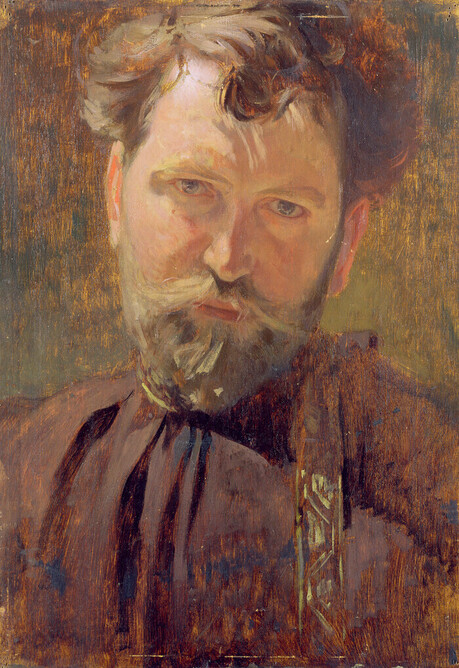A giant inflatable sculpture with a cartoonish skull-and-crossbones head sits atop the San Francisco Museum of Modern Art, resembling a car dealership's tube man while advertising the "KAWS: Family" exhibition inside. The gray balloon sculpture shares aesthetic similarities with another large installation just blocks away on Embarcadero Plaza - a 40-foot-tall naked woman made from steel mesh that was originally created for Burning Man and is now part of the Big Art Loop, a citywide public art initiative funded by a tech billionaire.
KAWS is the artistic pseudonym of American artist Brian Donnelly, who began his career in New York City's 1990s graffiti scene by altering bus stop advertisements with his signature skull and crossbones imagery. Donnelly quickly recognized that marketing was essential to success, transforming his iconic characters into branding opportunities for merchandise deals with fashion labels and toy companies. His recent induction into the traditional art world has resulted in the KAWS brand spanning from $20 t-shirts to $14 million paintings.
"KAWS: Family," which originated at the Art Gallery of Ontario in 2023, presents a small survey of Donnelly's work including large-scale sculptures, paintings, drawings, and merchandise from brand partnerships with Nike, MTV, and General Mills. The exhibition notably omits Donnelly's 1995 trip to San Francisco, where he met street artist Barry McGee, whose bus stop advertisement tagging inspired Donnelly to bring similar practices to the East Coast. This oversight represents a missed opportunity for SFMOMA to highlight local connections, though it also emphasizes how KAWS exists without strong ties to specific locations or identities.
Donnelly's brand revolves around signature characters with names like Companion, Chum, and Accomplice, all featuring uniform skull-and-crossbones heads with X-ed out eyes placed on bodies resembling Mickey Mouse, the Michelin Man, Boba Fett, Muppets, or various Simpsons characters. The exhibition's namesake "Family" is a 2021 sculpture featuring five characters that greets visitors at the entrance, while the rest of the show presents variations on this theme through towering bronze sculptures patinated to look like plastic, pen drawings, and acrylic paintings.
The exhibition never progresses beyond the merchandising appeal of repackaging familiar forms, raising questions about whether audiences should be excited by the juxtaposition of sneakers and paintings whose joint presentation only demonstrates that KAWS has succeeded by operating in both commercial and fine art markets. The emphasis on corporate partnerships suggests that something doesn't need traditional fine art integrity to be museum-worthy as long as it succeeds as an art-adjacent product. The work itself consists entirely of pastiche - an assemblage of postmodern references that may be charming due to character familiarity but lacks genuine commentary on pop culture or capitalism.
Donnelly has admitted that his current work has little connection to graffiti, citing his engagement with high-end streetwear companies and clearly embracing this commercial lineage. His "Kimpsons" series, which riffs on The Simpsons, presents paintings not in traditional frames but in plastic blister packs resembling action figure packaging found at Walmart. Another gallery displays cereal boxes he designed for General Mills in 2022, inevitably recalling Andy Warhol's Brillo Boxes - though where Warhol critiqued mass production, Donnelly actively participates in it.
A white gold and diamond-encrusted necklace commissioned by rapper Kid Cudi bears striking resemblance to Damien Hirst's "For the Love of God." This similarity recalls Hirst's 2007 BBC One interview comment that "as an artist you always make work from what's around you, and money was around me." The exhibition represents a decline in aesthetics affecting fine arts in San Francisco and elsewhere through the rise of "red-chip art" - work that appeals to tech and finance professionals through kitschy, seemingly harmless aesthetics and functions as status symbols and speculative investments with artificially inflated values.
Other artists catering to this movement include Beeple, Alex Israel, and Alec Monopoly, all following the precedent set by Hirst, Jeff Koons, and Takashi Murakami. While the original movement operated within traditional gallery systems, the new generation has largely bypassed white-cube art spaces for more lucrative alternatives - until now. A fascinating museum exhibition could explore the critical questions of how and why red-chip art has achieved such popularity at this particular political moment, yet "KAWS: Family" fails to take any interrogative position, simply treating KAWS as an established fact of contemporary fine art.
Museum decision-makers recognize they don't need to provide critical context because the show guarantees popularity - opening day lines already stretched around the block, with adult tickets priced at $42. The gift shop, occupying the exhibition's final gallery in typical KAWS fashion, clearly forms part of the intended experience. Critical analysis becomes irrelevant when commercial success speaks louder than artistic merit.
By hosting this show, originally organized by the Art Gallery of Ontario where government arts grants make commercial aspects less prominent, SFMOMA has chosen to prioritize its bottom line by catering to both tourists and the tech professionals who appear to be San Francisco's current tastemakers, rather than investing in art's transformative potential. This institutional capitulation to market forces driving the current technological gilded age represents a disappointing development at minimum, and potentially a dangerous precedent. The result suggests that meaningful art has become a liability in a capitalism-driven world, leaving audiences with the benign, vacant monument to commerce that is KAWS - so palatable it becomes nauseating.
"KAWS: Family" continues at the San Francisco Museum of Modern Art through May 3, 2026. The exhibition was originally organized by the Art Gallery of Ontario and curated by Julian Cox, with the SFMOMA presentation curated by Daryl McCurdy and William Hernandez Luege.








